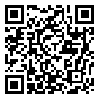

BibTeX | RIS | EndNote | Medlars | ProCite | Reference Manager | RefWorks
Send citation to:
URL: http://hcjournal.arums.ac.ir/article-1-29-en.html

 , Mehangiz Ebrahimi Mamaghani
, Mehangiz Ebrahimi Mamaghani 
 , Sakineh Mohammadalizadeh Charandabi
, Sakineh Mohammadalizadeh Charandabi 
 , Rogayeh Salmani *
, Rogayeh Salmani * 

ABSTRACT
Background: Iron-deficiency is the most common nutritional deficiency in the world and young people are at high risk of iron-deficiency anemia. One of the proposed methods to educate youth is peer education. This study aimed to compare the effects of peer education with direct education on weekly iron-rich foods frequency on Tabriz female students, 2011-2012.
Methods: This experimental study was done over 885 female students (ninth grade) who were randomly selected from 10 schools in Tabriz. Weekly food frequencies of 30 food items containing Iron and students’ knowledge about Iron deficiency through peer education method and direct were compared. The data was collected using a researcher made questionnaire containing demographic data and 18 questions to assess the knowledge and food frequency questionnaire and iron-rich foods. The questionnaire was completed by the samplesin two stages: after checking validity and reliability of questionnaire and 3 months after the educational intervention. Data analysis was done using SPSS ver.13.
Results: The mean score of knowledge after training in peer education group increased from 50.1 to 69.7 and in the direct training group it increased from 54.5 to 70.5 (P=0.001 in both groups).�comparison of two groups in post-test showed significant difference, so knowledge of peer education was significantly higher than direct instruction (p=0.001). However, no significant differences between the two groups was seen in Weekly frequency of consumption of food before and after training.
Conclusion:�Peer�education�is�an�effective�approach�to�increase students’ knowledge.�Therefore, it can be used as a complementary teaching method, along with other educational methods in improving students' knowledge.
Keywords: Peer Education, Direct Education, Knowledge, Food Frequency, Iron Deficiency
| Rights and permissions | |
 |
This work is licensed under a Creative Commons Attribution-NonCommercial 4.0 International License. |
